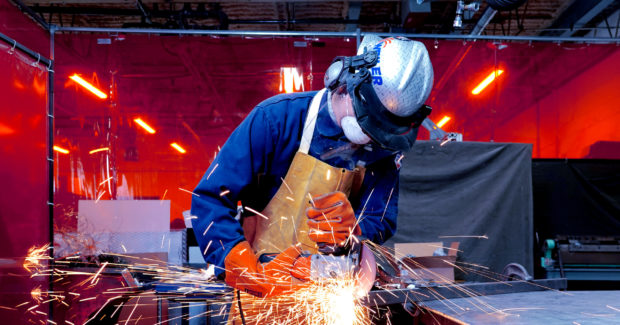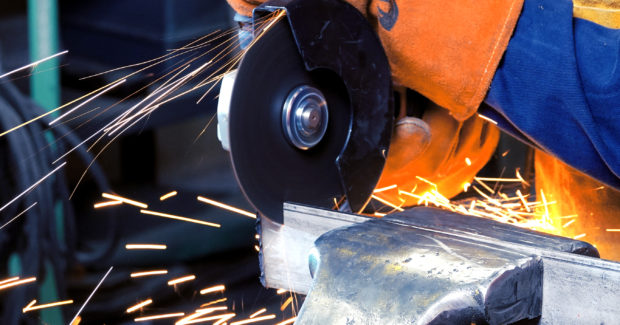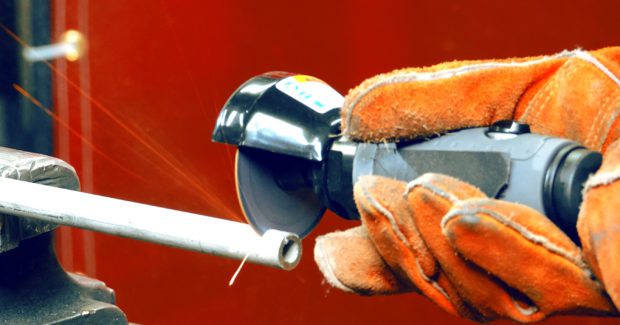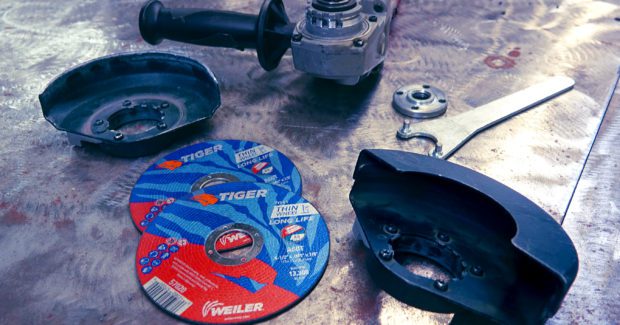Best Practices for Cutting Wheel Safety With a Variety of Wheel Diameters
Cutting wheels are an important component in metal fabrication. Place an emphasis on following best practices regarding the various diameters of cutting wheels.
Posted: July 18, 2022
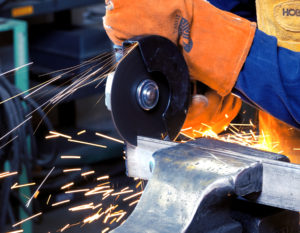
SURFACE CONDITIONING
Safety in a manufacturing environment is everyone’s responsibility — and cutting wheel safety is especially important because these abrasives are used on tools that run at high speeds.
When an operator uses a cutting wheel incorrectly or uses a damaged wheel, it can break apart and throw sharp projectiles at a high speed.
This makes it critical to pay attention to the condition of cutting wheels and follow best practices for safe and efficient use of these products. Consider some tips to safely use small, standard and large cutting wheels.
General Cutting Wheel Safety Recommendations
There are several best practices and recommendations for safe use that apply to cutting wheels of all sizes and types.
- Use the proper guard: Having the correct guard on the tool is an important part of safe cutting wheel use. Right-angle grinders — the tool most commonly used with cutting wheels — typically only come with a Type 27 guard. Cutting wheels, however, are often Type 1 style wheels that require a Type 1 guard, which has half-moon, 180-degree coverage to provide added protection for the operator. Using a Type 27 guard with a Type 1 cutting wheel does not provide that additional protection. Even worse is using no tool guard at all. Always have the proper guard in place when using a cutting wheel.
- Wear the necessary PPE: Personal protective equipment that should be worn when using a cutting wheel include safety glasses, a face shield, ear protection, gloves, flame-resistant clothing, leather apron and safety shoes. Hard hats and/or welding caps can also provide head protection from the sparks that occur during metal cutting.
- Conduct a visual inspection: Before using a cutting wheel, conduct a visual inspection of the wheel and tool. Replace with a new wheel if there are cracks or other signs of wear or damage. Even if the wheel is still on the tool, the tool could have been dropped or knocked off the tool rack, so it’s important to always check for damage before use. Also, jog the tool for a few seconds before using it to make sure it’s running true.
- Mount the wheel correctly: Most cutting wheels have a stamped metal ring around the wheel hub. The wheel should be mounted with the stamped insert facing the spindle on the motor side of the tool. This will provide a flush mount because there is less chance for grit or abrasive debris to be present on that side of the wheel.
- Secure the workpiece: Be sure the workpiece is held tightly in a vise or clamped so that there’s no chance it will move, bend or roll once the cut is started. If the workpiece does move during the cut, it could twist and pinch the wheel, potentially causing the wheel to break apart.
- Don’t flex a cutting wheel: During a cut, never try to flex or bend the wheel to make a curved cut. This introduces side loading and can fracture the wheel.
- Never grind with a cutting wheel: A cutting wheel doesn’t have the fiberglass reinforcement that a grinding wheel does, so it can be dangerous to grind with a cutting wheel. Only use a cutting wheel for cutting. Combination wheels can be used for both cutting and grinding and are marked accordingly.
- Don’t push a wheel through a cut: Cutting wheels should only have the weight of the tool as they go through a cut. Forcing the wheel with unnecessary pressure can cause the wheel to slip and bind. Too much pressure also decreases product life.
- Use a better abrasive for harder materials: Some specialty metals like titanium or Inconel can be difficult to cut. In these cases, choose a cutting wheel with a higher-performing abrasive grain like a ceramic. This helps you cut efficiently and reduces the possibility of the wheel glazing due to excessive heat.
- Watch the spark path: Sparks are created with any type of cutting wheel. The spark path can be altered depending on the approach used for the cut. Be mindful of the spark path and any items that could be damaged or coworkers who are in the area.
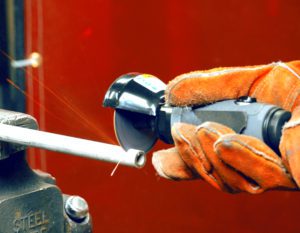
Best Practices for Small Diameter Cutting Wheels
Wheels that are 4 inches or smaller with a ¼-inch or ⅜-inch arbor hole are considered small diameter.
Small diameter cutting wheels are frequently used in metal fabrication, shipbuilding and numerous other manufacturing industries. The smaller size of these wheels is a benefit when cutting metal in a corner or hard-to-reach spot.
Some operators may feel overconfident with a smaller diameter wheel — thinking they will be easier to control. But many of the pneumatic tools in this size range can run at much higher RPMs, so be careful to use proper cutting technique and always use the tool guard. Also be sure the speed rating of the wheel matches or exceeds the speed rating of the tool.
Just because a wheel can be mounted on a die grinder doesn’t mean it is safe to do so. There are many dedicated, small diameter cut-off tools available that include the proper guarding. Make sure you have the proper tool and guard before you start cutting.
Best Practices for Standard Diameter Cutting Wheels
Standard diameter cutting wheels — those that are 4 inches to 9 inches in size and typically with a ⅝-inch or ⅞-inch arbor hole — are commonly used on right-angle grinders. These mid-range cutting wheels are often the most used across many general fabrication and manufacturing applications.
Using the proper tool guard with these wheels — as stated in the general tips above — is important.
Also, never remove the handle from a right-angle grinder to fit it into a smaller space for cutting. The handle is necessary for stability because these grinders can easily twist in the operator’s hand and cause the wheel to bind. The handle also provides better control in case of tool kickback.
As these wheels wear down, they can become harder to control. When a wheel becomes too small to properly control or make the desired cuts, swap it out for a new wheel.
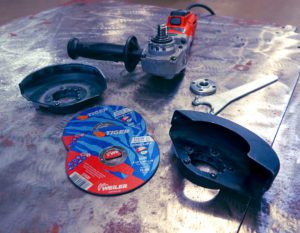
Best Practices for Large Diameter Cutting Wheels
Wheels that are 10 inches to 24 inches fall into the large diameter category. The most commonly used sizes of large wheels are 12, 14 and 16 inches.
Large diameter cutting wheels are often used to cut thicker or larger pieces of metal. They are typically used on tools like chop saws, stationary saws or high-speed saws. If the operator is using a high-speed, gas-powered saw, be aware these tools can run at high RPMs; it’s not safe to use a standard chop saw wheel on a gas-powered saw because the tool will run too fast for the rating of the wheel, causing a very unsafe situation.
Be sure to match the speed, size and recommended application of the wheel to the speed and size of the specific tool being used. Also make sure the wheel uses the proper abrasive grain for the metal being cut and that it’s designed for that tool. Using the wrong abrasive can generate excessive heat and cause the wheel to glaze and stop cutting.
Safe use of Cutting Wheels
Cutting wheels are an important component of metal fabricating and are used in many industries. Following best practices for wheel use and wearing proper protective gear can reduce the risk of injury when using these products — and help operations save time and money that can be lost to injuries.
Manufacturers often offer safety training for using cutting wheels and other abrasives. For example, the Weiler Abrasives SPOT Safety Program focuses on the principles of SPOT (speed and size, pressure, orientation, time) to promote safe and proper use of abrasive products.
Subscribe to learn the latest in manufacturing.





